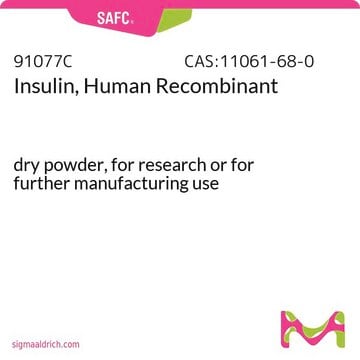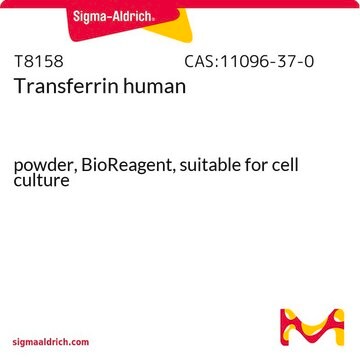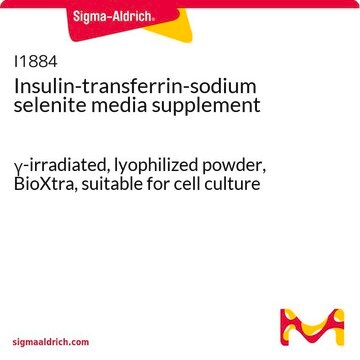This product is not a sterile preparation. If the intended use, such as in cell culture, requires a sterile environment, then the stock solution would require filter sterilization. Typically, this is achieved by filtration through a 0.22 um membrane. Alternatively, product S9133 is a γ-irradiated, sterile powder. When reconstituted aseptically using sterile water, this product may be added directly to culture medium.
Please see the link below to review this product option:
https://www.sigmaaldrich.com/product/sigma/s9133
S5261
Sodium selenite
BioReagent, suitable for cell culture, ≥98%
Sinónimos:
Selenious acid, Sodium salt
About This Item
Productos recomendados
biological source
synthetic (inorganic)
Quality Level
product line
BioReagent
assay
≥98%
form
powder
technique(s)
cell culture | mammalian: suitable
mp
>350 °C (lit.)
solubility
water: 50 mg/mL, clear to very slightly hazy, colorless
SMILES string
[Na+].[Na+].[O-][Se]([O-])=O
InChI
1S/2Na.H2O3Se/c;;1-4(2)3/h;;(H2,1,2,3)/q2*+1;/p-2
InChI key
BVTBRVFYZUCAKH-UHFFFAOYSA-L
¿Está buscando productos similares? Visita Guía de comparación de productos
Application
signalword
Danger
Hazard Classifications
Acute Tox. 2 Inhalation - Acute Tox. 2 Oral - Aquatic Chronic 2 - Eye Irrit. 2 - Skin Irrit. 2 - Skin Sens. 1
supp_hazards
Storage Class
6.1A - Combustible acute toxic Cat. 1 and 2 / very toxic hazardous materials
wgk_germany
WGK 2
flash_point_f
Not applicable
flash_point_c
Not applicable
ppe
Eyeshields, Faceshields, Gloves, type P3 (EN 143) respirator cartridges
Elija entre una de las versiones más recientes:
¿Ya tiene este producto?
Encuentre la documentación para los productos que ha comprado recientemente en la Biblioteca de documentos.
Los clientes también vieron
Artículos
Antioxidants protect biological systems from oxidative damage produced by oxygen-containing free radicals and from redoxactive transition metal ions such as iron, copper, and cadmium.
-
need filtration (0.2um) after preparation?
1 answer-
Helpful?
-
-
How long does an aliquot of this product in water remain stable at -20 degrees Celsius?
1 answer-
As mentioned on the Product Datasheet, stock solutions of sodium selenite may be frozen. Working aliquots remain active for 30 days at 2-8 °C. The Datasheet can accessed in the DOCUMENTATION section under 'More Documents'. Please see the link below:
https://www.sigmaaldrich.com/deepweb/assets/sigmaaldrich/product/documents/245/224/s5261pis.pdfHelpful?
-
-
What solvent do I need to use? DMSO OK?
1 answer-
This item is soluble in water at 50mg/mL. The solubility in DMSO as not been tested.
Helpful?
-
Active Filters
Nuestro equipo de científicos tiene experiencia en todas las áreas de investigación: Ciencias de la vida, Ciencia de los materiales, Síntesis química, Cromatografía, Analítica y muchas otras.
Póngase en contacto con el Servicio técnico













